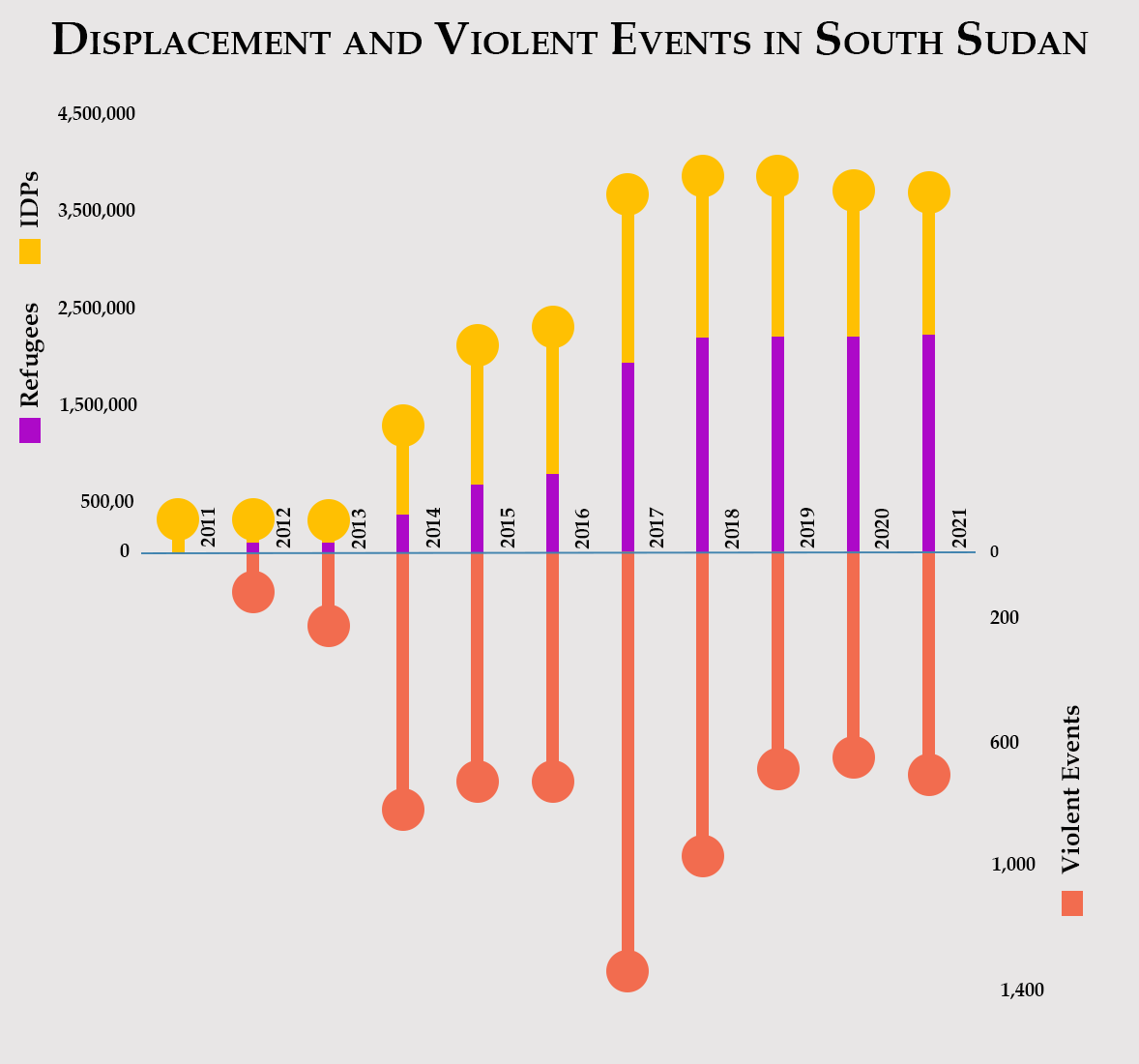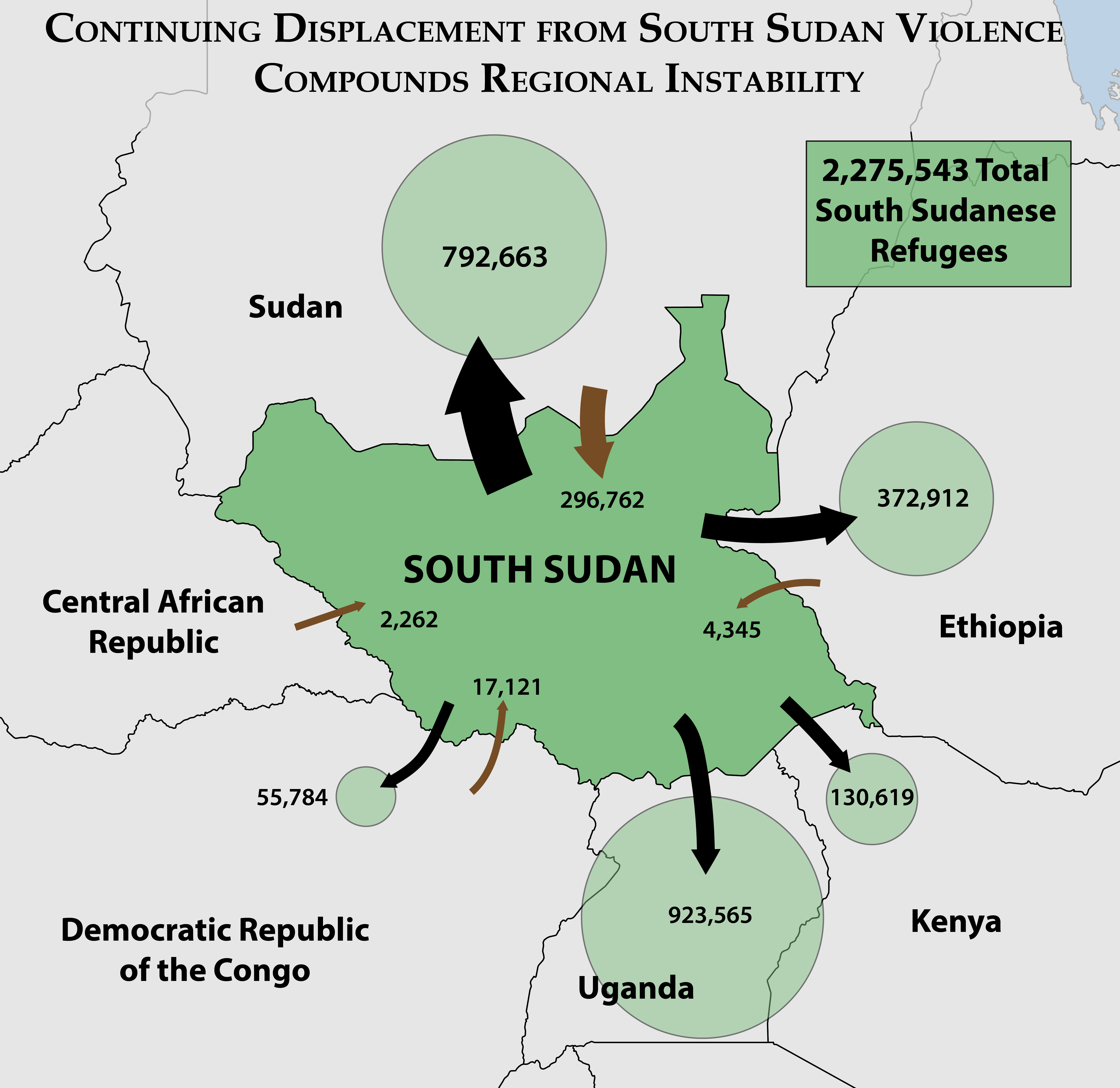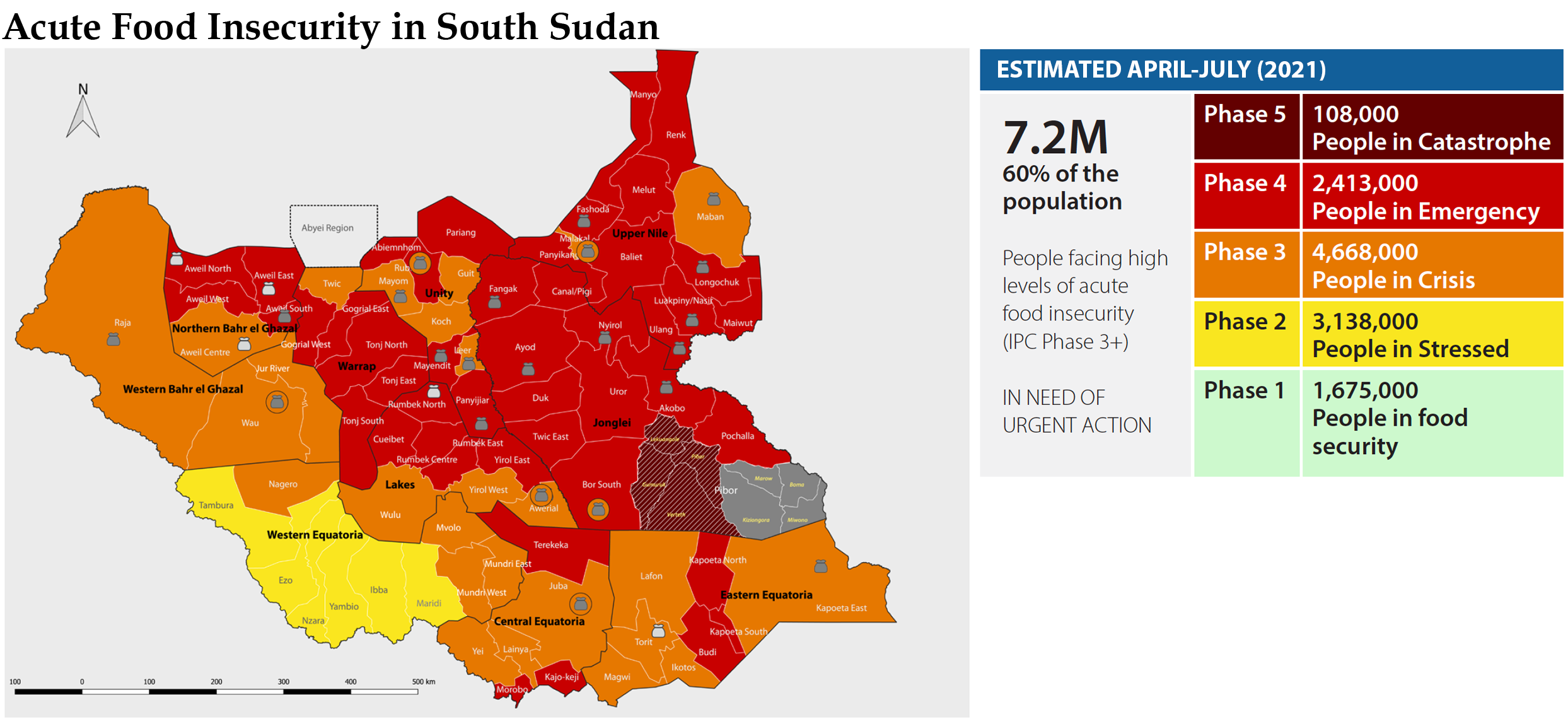Highlights:
Despite a revitalized peace agreement and an ostensible coalition government, South Sudan continues to be racked by insecurity. Persistently high levels of violence and trauma—which has caused an estimated 400,000 fatalities—continue to grip the population and underscore the unresolved nature of this conflict.

Data Sources: UNHCR, Armed Conflict Location & Event Data Project (for years ending June 30)
Violent Events
- Despite the Revitalized Agreement on the Resolution of the Conflict in South Sudan of 2018, armed violence in South Sudan remains persistently high and shows little sign of abating. The pace of violent events has remained steady, averaging 733 reported incidents annually since 2017. Violence in 2021 exceeds that of 2019 and 2020.
- Central Equatoria has been a focal point of the violence in recent years, averaging 180 reported episodes annually, or 25 percent of the average national total. However, a map of violent events in South Sudan highlights the breadth of the violence. Jonglei, Unity, Lakes, Upper Nile, Western Equatoria, Eastern Equatoria, and Warrap States have all sustained significant fighting since 2018.
- Violence in South Sudan has also been spatially concentrated around the country’s main road networks. These events highlight the strategic importance of roads in this expansive territory. South Sudan has less than 300 km of paved roads in a country of 650,000 km2, roughly the size of France. The concentration of violent events around transportation networks highlights the vulnerability of populations and goods moving on roads. Each violent event, therefore, has an amplified effect on insecurity and isolation due to the further constriction of movement.
Forced Displacement
- The expansiveness and persistence of the violence in South Sudan is a key driver behind the extraordinary levels of forced displacement. More than a third of the population, an estimated 4 million, are displaced. The majority of these are refugees, a rarity among African conflicts, where the displaced typically find refuge within their own country. This has contributed to South Sudan’s notorious distinction of having a greater share of its citizens living as refugees than any other country in Africa.
- Since 2018, there have been more attacks on civilians than there have been battles between combatants. The continued threats to the safety of civilians have kept many from returning home.
- The 2.3 million refugees exact a particularly heavy cost on South Sudan’s neighbors who have been forced to host these displaced populations for years. Uganda supports nearly 1 million South Sudanese refugees, the largest refugee population in Africa. Sudan is close behind with nearly 800,000 refugees.
Food Insecurity
- The share of South Sudan’s population facing acute food insecurity has been steadily increasing since 2013, when the civil conflict first broke out. There are now upwards of 6.5 million people in South Sudan (or 63 percent of the population) experiencing acute food insecurity. More than 100,000 are facing famine (IPC Phase 5).
- The sustained high levels of food insecurity in South Sudan are a direct consequence of political violence. As South Sudanese have been displaced, they have lost their means of livelihood. Violence has also disrupted planting, harvesting, transportation of food, and the functioning of markets.
- States in the center and northeast of South Sudan—Jonglei, Pibor, Warrap, and Upper Nile—face the most serious food insecurity. These areas are directly affected by conflict as well as disruptions caused by restricted transportation of goods, including access to food assistance. States in the northeast are particularly isolated, with a single main road artery. This region is also highly vulnerable to flooding, amplifying the disruptions to food systems caused by violence.
More on: Displacement Food Security Governance South Sudan





